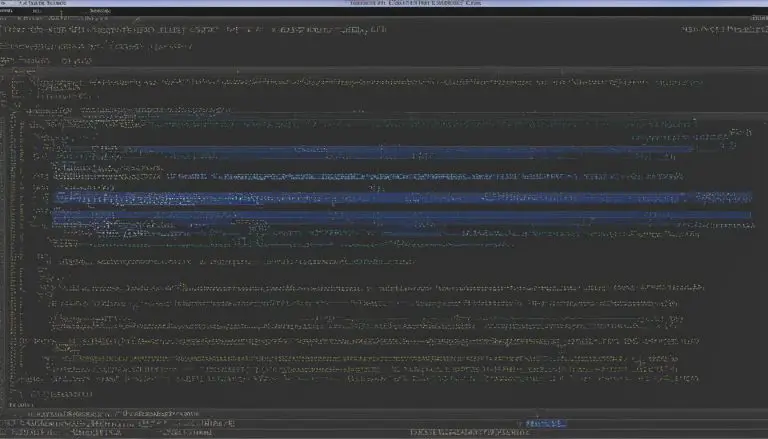Unlocking Efficiencies: Reasons Why Use Docker is Beneficial
Docker is a powerful tool that offers numerous benefits for software development and deployment, making it an indispensable choice for modern developers. With its innovative approach to containerization, Docker simplifies the development and deployment processes, enhancing efficiency and flexibility. By encapsulating applications and their dependencies, Docker reduces resource overhead and accelerates container startup times. This image-based deployment model optimizes image downloads, reduces disk space usage, and enables faster container startup. Docker’s lightweight architecture ensures efficient utilization of system resources, allowing for denser packing of containers. Moreover, Docker incorporates caching mechanisms that boost performance by reducing rebuild times and accelerating image retrieval. By embracing the principles of microservices architecture, Docker enables scalability, independent management, and rapid updates. Additionally, Docker’s shared kernel approach eliminates the need for a full operating system in each container, further reducing resource overhead and enhancing container startup times.
Key Takeaways:
- Docker simplifies software development and deployment processes through containerization.
- Image-based deployment in Docker optimizes image downloads, reduces disk space usage, and speeds up container startup.
- Docker’s lightweight architecture allows for more efficient utilization of system resources.
- Caching mechanisms in Docker enhance performance by reducing rebuild times and accelerating image retrieval.
- Docker aligns with the principles of microservices architecture, enabling scalability and rapid updates.
Enhancing Development and Deployment Processes
Docker revolutionizes the way developers build and deploy software, providing a range of features that streamline the entire development lifecycle. With Docker, developers have a powerful tool at their disposal to enhance development and deployment processes.
One of Docker’s key advantages is its efficient and flexible containerization technology. By encapsulating applications and their dependencies, Docker reduces resource overhead and accelerates container startup times. This means developers can quickly spin up and tear down containers, allowing for faster testing, debugging, and deployment of applications.
Docker’s image-based deployment model further enhances development and deployment processes. It enables optimized image downloads, reduces disk space usage, and facilitates faster container startup times. Developers can easily share and distribute Docker images, ensuring consistent environments across different development and deployment environments.
Additionally, Docker’s lightweight architecture makes it a resource-efficient solution. With Docker, developers can efficiently utilize system resources and achieve denser packing of containers. This not only saves valuable resources but also allows for the scaling and deployment of multiple applications on a single host.
Moreover, Docker incorporates caching mechanisms that boost performance. These mechanisms minimize rebuilding times and accelerate image retrieval, resulting in faster development cycles and improved productivity for developers.
Furthermore, Docker aligns seamlessly with the principles of microservices architecture. It allows developers to break down applications into smaller, independently manageable components, enabling scalability, flexibility, and rapid updates. Docker’s containerized approach facilitates the deployment and management of microservices-based applications.
Finally, Docker’s shared kernel approach eliminates the need for a full operating system in each container, significantly reducing resource overhead and enabling faster container startup times. This approach ensures efficient resource utilization, making Docker an ideal choice for modern software development and deployment needs.
| Benefits of Docker for Development and Deployment |
|---|
| Efficient containerization technology |
| Optimized image downloads |
| Reduced resource overhead |
| Improved performance with caching mechanisms |
| Scalability and flexibility with microservices architecture |
| Shared kernel approach for faster startup times |
Containerization: Streamlining Application Deployment
One of the key advantages of using Docker is its containerization capability, which enables developers to package applications and their dependencies into self-contained units. This approach streamlines the deployment process by encapsulating the entire runtime environment, including libraries, configurations, and other dependencies, within a single container. As a result, deploying applications becomes consistent and reliable, regardless of the underlying infrastructure.
Docker’s containerization also promotes scalability and resource efficiency. By abstracting applications from the host operating system, Docker allows multiple containers to run simultaneously on the same machine, maximizing resource utilization. This enables developers to pack more containers into their infrastructure, leading to improved efficiency and cost savings.
Furthermore, containerization with Docker provides an isolated and secure environment for applications. Each container operates in isolation, preventing conflicts between dependencies and enhancing security. In addition, Docker offers easy version control and rollback capabilities, allowing developers to manage application updates and changes with ease.
Table: Docker vs. Traditional Deployment
| Traditional Deployment | Docker Containerization |
|---|---|
| Complex installation and configuration processes | Consistent and repeatable deployments |
| Dependency conflicts and compatibility issues | Isolated runtime environment for each application |
| Slow deployment and scaling processes | Rapid and efficient deployment and scaling |
| Resource wastage due to dedicated servers | Maximized resource utilization through containerization |
In summary, Docker’s containerization capability offers significant advantages for streamlining application deployment. By encapsulating applications and their dependencies, Docker simplifies the deployment process, enhances scalability and resource efficiency, and provides a secure and isolated runtime environment. These benefits make Docker an essential tool for modern software development and deployment needs.
Optimized Image Management and Deployment
Docker’s image-based deployment model revolutionizes software deployment, providing a more efficient and streamlined approach to managing and deploying applications. With Docker, applications are packaged into images that include all the required dependencies and libraries. These images can then be easily distributed and deployed across different environments, ensuring consistency and eliminating the need for manual configuration. This image-centric approach simplifies the deployment process, making it faster, more reliable, and less error-prone.
One of the key advantages of Docker’s image-based deployment is optimized image management. Docker images are stored as layers, allowing for efficient image downloads and reducing disk space usage. When a new image is built, Docker will reuse existing layers from previously built images, only downloading and adding the new layers. This significantly speeds up the image retrieval process and saves valuable disk space.
In addition to optimized image management, Docker also enables faster container startup times. Docker containers are lightweight and share the host system’s resources, avoiding the overhead of running a full operating system. This efficient utilization of system resources allows for denser packing of containers on a single host, maximizing resource efficiency and reducing infrastructure costs.
| Advantages of Docker’s Image-Based Deployment |
|---|
| Optimized image downloads |
| Reduced disk space usage |
| Faster container startup times |
By leveraging Docker’s image-based deployment model, businesses can achieve greater efficiency and agility in software deployment. The ability to easily manage, distribute, and deploy applications in a consistent and reproducible manner leads to faster time-to-market, improved scalability, and reduced operational costs. With Docker, software development and deployment become more reliable and predictable, allowing teams to focus on innovation and delivering value to their customers.
Lightweight and Resource-Efficient Solution
Docker’s lightweight design empowers developers to pack more containers onto a single host system, maximizing resource utilization and efficiency. By utilizing the host system’s resources efficiently, Docker enables a denser packing of containers, allowing for greater scalability and cost-effectiveness.
In addition, Docker’s lightweight architecture minimizes resource overhead by eliminating the need for a full operating system in each container. Instead, Docker shares the host system’s kernel, resulting in faster container startup times and reduced memory consumption. This shared kernel approach ensures that containers consume minimal system resources, making Docker an ideal solution for applications with limited resources or high-density deployment scenarios.
Moreover, Docker’s lightweight nature also facilitates quicker deployment and scaling. With its small footprint, Docker containers can be launched and stopped rapidly, enabling developers to respond to changing demands and allocate resources efficiently. This agility makes Docker an ideal choice for deploying microservices, where each component can be individually managed, updated, and scaled independently.
Table: Docker vs. Traditional Virtualization
| Aspect | Docker | Traditional Virtualization |
|---|---|---|
| Resource Utilization | Maximized due to shared kernel | Lower due to multiple guest OS |
| Startup Time | Faster | Slower due to booting full OS |
| Memory Usage | Reduced | Higher due to guest OS |
In conclusion, Docker’s lightweight and resource-efficient nature makes it a top choice for modern software development and deployment. Its ability to maximize resource utilization, accelerate deployment, and enable efficient scaling aligns perfectly with the demands of today’s dynamic and fast-paced development environments. By leveraging Docker’s advantages, developers can unlock efficiencies, streamline processes, and deliver high-performing applications with ease.
Performance Boost with Caching Mechanisms
Docker’s caching mechanisms significantly improve performance by reducing the time required for image rebuilding and accelerating image retrieval. This caching functionality plays a crucial role in the efficiency of Docker technology.
By storing previously built layers and images, Docker minimizes the need for rebuilding containers from scratch. When changes are made to an image, Docker only rebuilds the layers affected by those changes, saving valuable time during the development and deployment processes.
Furthermore, Docker’s caching mechanisms enable faster image retrieval. Once an image has been pulled from a registry, subsequent requests for the same image can be served directly from the local cache. This eliminates the need to repeatedly download the same image, resulting in faster container startup times.
| Benefits of Docker’s Caching Mechanisms |
|---|
| 1. Reduced rebuild times: By only rebuilding affected layers, Docker reduces the time required for image rebuilding, improving developer productivity. |
| 2. Accelerated image retrieval: Docker’s local cache allows for faster image retrieval, eliminating the need to download the same image repeatedly. |
| 3. Improved performance: By optimizing image rebuilding and retrieval, Docker ensures a smoother and faster software development and deployment experience. |
In summary, Docker’s caching mechanisms enhance performance by minimizing rebuild times and accelerating image retrieval. These benefits contribute to the overall speed and efficiency of Docker technology, making it an essential tool for modern software development and deployment needs.
Embracing Microservices Architecture
Docker seamlessly integrates with microservices architecture, providing a flexible and scalable solution that empowers developers to build and manage independent services. By leveraging Docker’s containerization technology, software development teams can break down their applications into smaller, self-contained components called microservices. Each microservice can be developed, scaled, and deployed independently, enabling faster iterations and continuous delivery.
With Docker, teams can easily orchestrate and scale their microservices across multiple containers, ensuring optimal resource utilization and high availability. Docker allows developers to package each microservice along with its dependencies into a lightweight, portable container. This containerized approach ensures consistent environments from development to production, reducing compatibility issues and streamlining the deployment process.
By adopting microservices architecture with Docker, organizations can achieve greater agility and scalability. Docker’s modular and decentralized nature enables teams to build and deploy services independently, facilitating faster development cycles and easier maintenance. This approach also allows for seamless integration of new services or updates without disrupting the entire application.
Additionally, Docker’s robust ecosystem provides a wide range of tools and services that further enhance microservices architecture. Developers can take advantage of container orchestration platforms like Kubernetes to automate the deployment, scaling, and management of their microservices. This level of automation ensures optimal resource allocation, load balancing, and fault tolerance, enabling organizations to deliver resilient and scalable applications.
| Benefits of Docker for Microservices Architecture |
|---|
| Flexible and scalable solution |
| Independent development and deployment of microservices |
| Consistent environments for development and production |
| Seamless integration of new services or updates |
| Automation with container orchestration platforms |
Overall, Docker’s integration with microservices architecture offers numerous benefits for modern software development. It empowers teams to adopt an agile approach, build scalable applications, and deliver new features and updates efficiently. As organizations continue to embrace microservices, Docker remains a leading technology for unlocking the full potential of this architectural paradigm.
Eliminating Resource Overhead with Shared Kernel Approach
Docker’s shared kernel approach eliminates the redundancy of a full operating system in each container, resulting in reduced resource overhead and faster container startup times. By utilizing the host system’s kernel, Docker allows multiple containers to share the same operating system kernel while remaining isolated and independent entities.
This shared kernel approach brings significant efficiency gains by reducing the amount of system resources required for each container. Unlike traditional virtualization techniques that necessitate running a separate operating system for each virtual machine, Docker containers only need the essential components to run the specific application or service they encapsulate. This streamlined approach translates into reduced memory usage, disk space, and processing power, maximizing the system’s efficiency.
Furthermore, Docker’s shared kernel approach enhances container startup times. Without the need to boot a full operating system, containers can be launched quickly, allowing for faster deployment and scaling of applications. This increased speed makes Docker an ideal choice for dynamic environments that require rapid provisioning and frequent updates.
| Benefits of Docker’s Shared Kernel Approach |
|---|
| Reduced memory usage |
| Decreased disk space requirements |
| Improved processing efficiency |
| Fast container startup |
| Efficient resource utilization |
In summary, Docker’s shared kernel approach is one of the key factors contributing to its reputation as a lightweight and resource-efficient solution for software development and deployment. By eliminating the need for redundant operating systems in each container, Docker enables organizations to optimize their resource usage, reduce overhead costs, and achieve faster application deployment and scaling.
Conclusion
In conclusion, Docker offers a range of benefits that unlock efficiencies in software development and deployment, making it an invaluable tool for modern developers. Firstly, Docker utilizes containerization, which encapsulates applications and their dependencies, reducing resource overhead and accelerating container startup times. This streamlined approach to application deployment simplifies the development process and enables faster and more efficient deployment of software.
Secondly, Docker’s image-based deployment model allows for optimized image downloads, reduced disk space usage, and faster container startup times. By utilizing lightweight and portable container images, software can be deployed quickly and consistently across various environments, increasing productivity and reducing potential deployment errors.
Thirdly, Docker is designed to be lightweight and resource-efficient, sharing the host system’s resources and enabling denser packing of containers. This efficient utilization of system resources allows for greater scalability and flexibility in managing and deploying applications.
Fourthly, Docker incorporates caching mechanisms to enhance performance, reducing the time required for image rebuilding and accelerating image retrieval. With Docker’s caching capabilities, developers can enjoy faster build times and improved overall performance, leading to increased productivity and faster time to market.
Fifthly, Docker aligns with the principles of microservices architecture, allowing for scalability, independent management, and rapid updates. By breaking down applications into smaller, manageable components, developers can easily scale their software, manage each component independently, and deploy updates seamlessly, reducing downtime and improving overall efficiency.
Finally, Docker’s shared kernel approach eliminates the need for a full operating system in each container, reducing resource overhead and enabling faster container startup times. This streamlined approach not only improves efficiency but also ensures consistent performance across different host systems, making Docker a reliable and efficient solution for software development and deployment.
Overall, Docker’s speed and efficiency make it the preferred solution for modern software development and deployment needs. With its ability to streamline processes, optimize resource usage, and enhance performance, Docker provides developers with a powerful tool to unlock efficiencies and drive innovation in the ever-evolving world of software development.
FAQ
Why should I use Docker?
Docker offers several benefits such as reduced resource overhead, faster container startup times, optimized image management, enhanced performance with caching mechanisms, alignment with microservices architecture principles, and elimination of resource overhead with the shared kernel approach. These advantages make Docker a preferred solution for modern software development and deployment needs.
How does Docker streamline application deployment?
Docker simplifies application deployment through containerization. It encapsulates applications and their dependencies, reducing resource overhead and accelerating container startup times. This streamlines the deployment process and ensures consistency across different environments.
What are the advantages of Docker’s image-based deployment model?
Docker’s image-based deployment model allows for optimized image downloads, reduced disk space usage, and faster container startup times. It ensures that applications and their dependencies are packaged together in a single unit, making it easier to manage and deploy software.
How does Docker contribute to lightweight and resource-efficient solutions?
Docker is designed to be lightweight and resource-efficient by sharing the host system’s resources. This allows for denser packing of containers, optimizing the utilization of system resources and enabling efficient scaling and management of applications.
How does Docker enhance performance with caching mechanisms?
Docker incorporates caching mechanisms that enhance performance. These mechanisms reduce the time required for image rebuilding and accelerate image retrieval, improving overall development and deployment efficiency.
In what way does Docker align with microservices architecture?
Docker aligns with the principles of microservices architecture. It allows for scalability, independent management, and rapid updates of individual services within an application. Docker containers can be easily deployed, scaled, and updated, enabling agile development and efficient deployment of microservices-based applications.
How does Docker eliminate resource overhead with the shared kernel approach?
Docker’s shared kernel approach eliminates the need for a full operating system in each container. Instead, containers share the host system’s kernel, reducing resource overhead and enabling faster container startup times. This approach optimizes resource utilization and improves overall performance.
- About the Author
- Latest Posts
Mark is a senior content editor at Text-Center.com and has more than 20 years of experience with linux and windows operating systems. He also writes for Biteno.com






